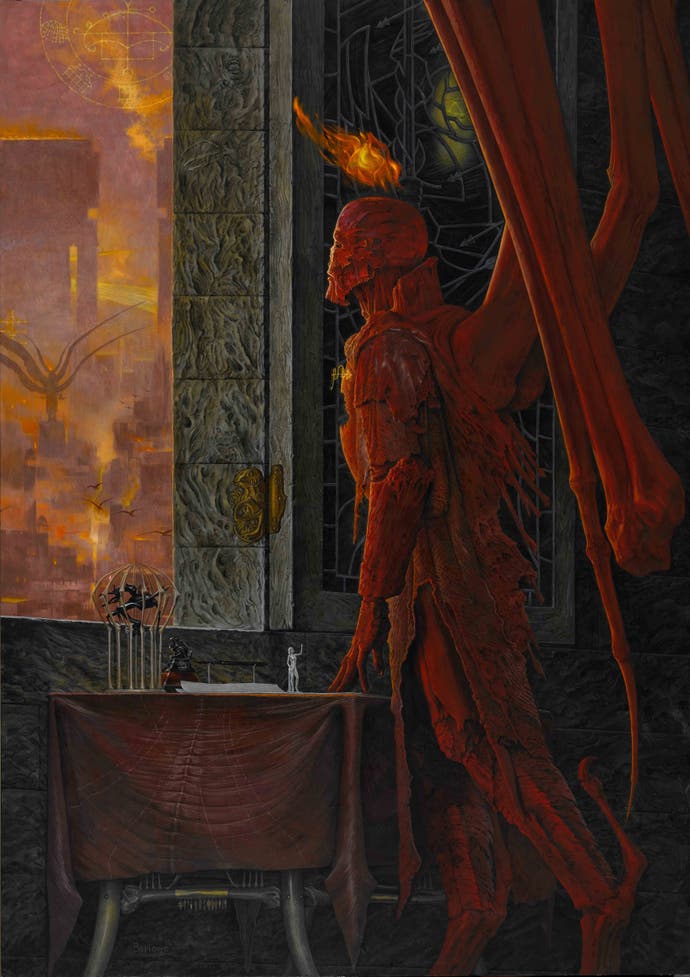The road to video game hell
Sightseeing in the abyss.
If the games we play are anything to go by, the depths of hell are one of humankind's favourite destinations when it comes to travels of the mind. Few fantasy RPGs or horror games could be considered complete without at least a quick excursion into the domain of demons and sinners. And what better place to conclude your game than hell itself? What better villains to fight than the citizens of Pandemonium? Hell has found a steady home in many kinds of games, and its popularity shows no sign of abating.
"A dungeon horrible, on all sides round
As one great furnace flamed, yet from those flames
No light, but rather darkness visible
Served only to discover sights of woe,
Regions of sorrow, doleful shades, where peace
and rest can never dwell, hope never comes
That comes to all; but torture without end
Still urges, and a fiery deluge, fed
With ever-burning sulphur unconsumed"
John Milton, Paradise Lost (1667)
Of course, games are nothing special in this regard. After all, hell has been a favourite subject in art and literature for hundreds, even thousands of years, and the sights we encounter in a short stroll through art history are at least as horrific as even the bloodiest excesses so often condemned in games.
In the illuminated pages of the Très Riches Heures du Duc de Berry (ca. 1412), we see a crowned and bestial Satan torturing the souls of the damned, but he himself, laying on a burning pit, is being tormented as well - not unlike the fallen angels of Paradise Lost. In the background, hell appears as a uniform and grey landscape of jagged mountains and fiery caves.
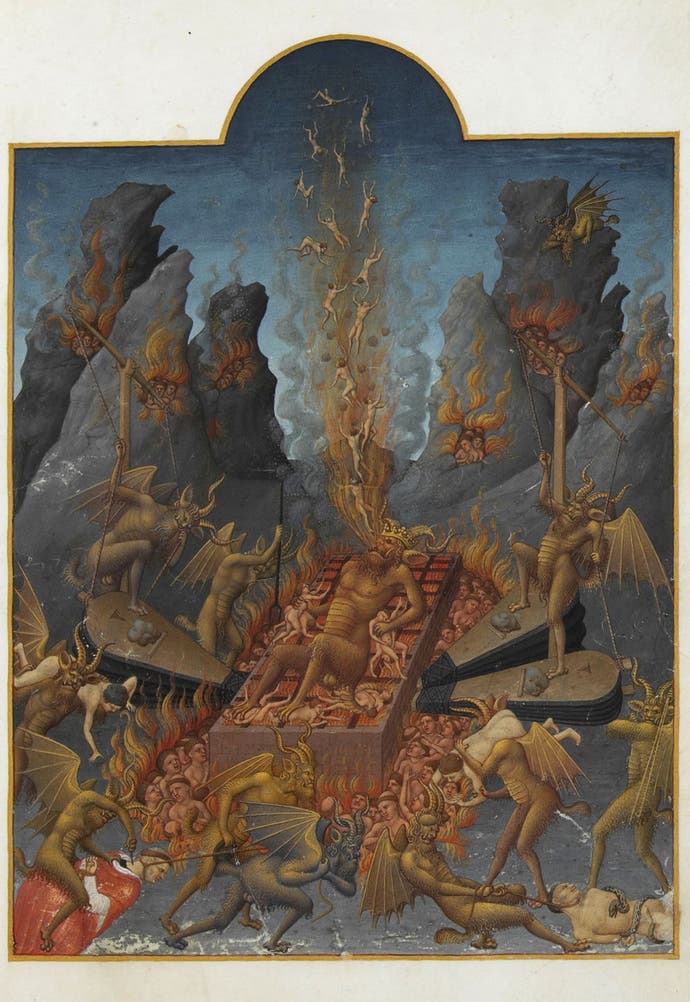
In Jan van Eyck's The Last Judgement (1430s), hell is marked by an absence of geography. Death divides with his spread-out wings the world above from the demons and sinners below and creates a place that follows a very different spatial logic from the world above. This hell is a writhing mass of grotesque bodies where sinners are torn to pieces by a wild menagerie of spiked and grinning demons; a morbid and decadent sight strikingly similar to the most provocative of heavy metal cover artworks. In Hans Memling's interpretation of The Last Judgement (1460s), hell is defined by smoke, fire and a jagged cliff side. It's a vertical place, with sinners tumbling down from above.

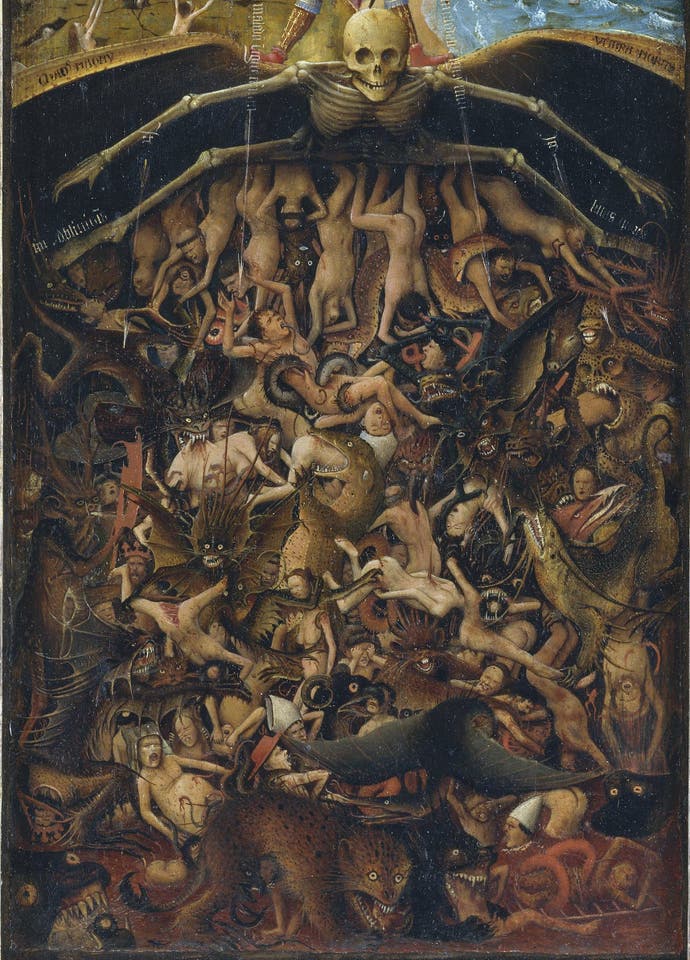
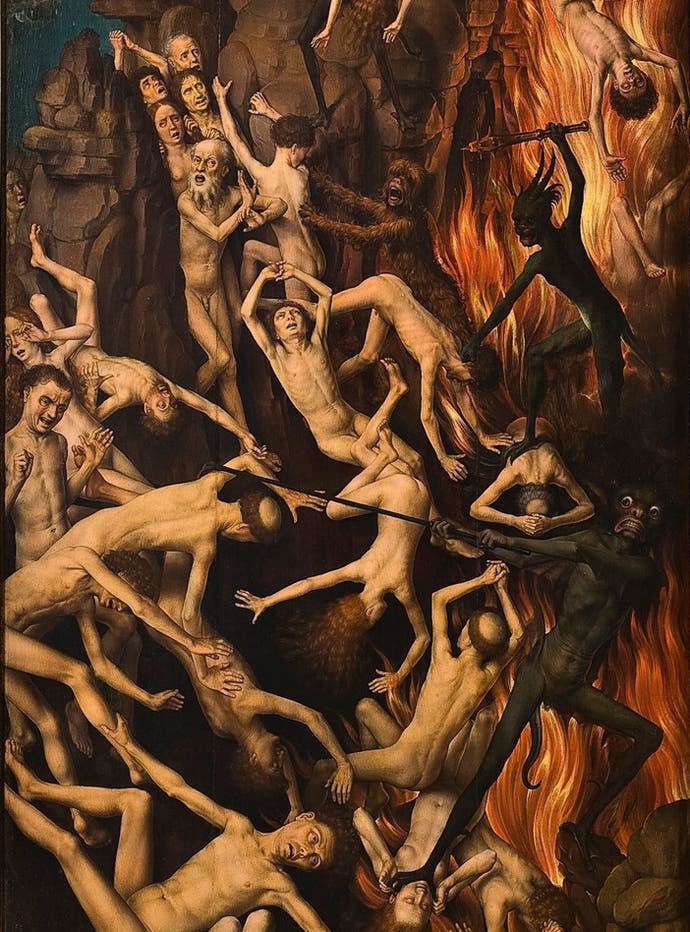
The most well-known of all attempts to capture hell were without a doubt undertaken by Hieronymus Bosch, famous for his surreal scenes, incredible attention to detail and whimsical creatures. In the two triptychs The Last Judgement (ca. 1482) and The Garden of Earthly Delights (late 15th, early 16th century), hell is still chaotic and badly lit to say the least, but unlike other renditions, the abyss has a geography just like any other place. There are bridges, lakes, cities, mountains, and above all, great plains overrun by throngs of sinners and demons.
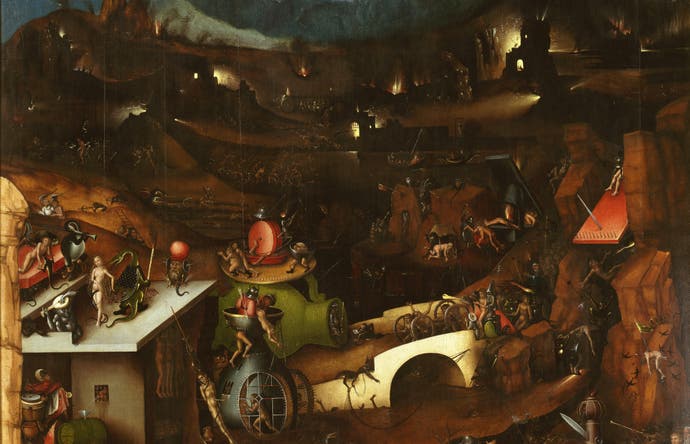

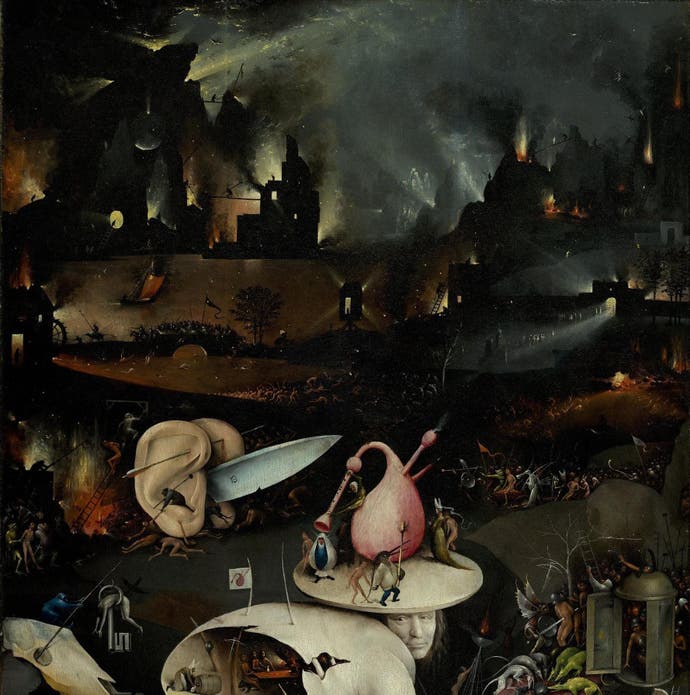
Nowhere is the perennial appeal of hell more apparent than in Bosch's interpretations. Its ready-made iconography of fire and brimstone, demons and sinners makes it instantly recognisable and relatable while at the same time offering a wide-open space for wild and exciting flights of fancy. Despite its veneer of monolithic constancy, hell is always changing from one age or work of art to the next. Hell is Legion, for there are as many hells as there are interpretations of it. It's a well-known irony of history that artists, writers and audiences alike have always been more drawn to hell than to heaven, and who can blame them? Who wants to hear about eternal bliss and peace if one could revel in the illicit thrills of infernal horrors instead?
The same is true for virtual incarnations of hell. In Dark Souls, we descend into a version of hell that seems quite traditional. Arriving in the Demon Ruins, we are greeted with lakes and rivers of lava, horned demons, grotesquely tormented "souls" and pillared structures somewhat reminiscent of the classical, "pagan" architecture of the infernal city Pandemonium as described in Paradise Lost. Equally faithful to mythology is the way this hell fits into Dark Souls' vertical cosmology. Unlike most other games, we not only descend into hell, but also ascend to "heaven" in the form of Anor Londo.
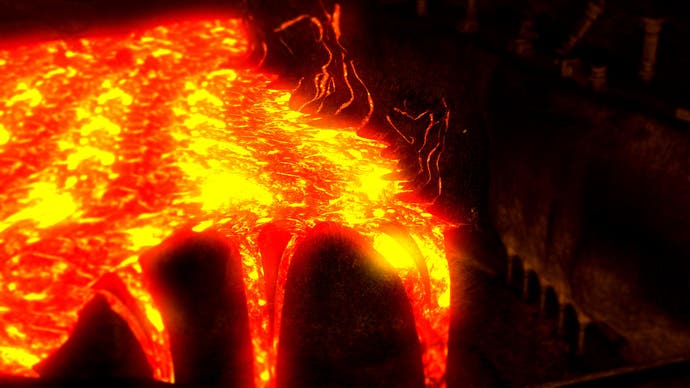
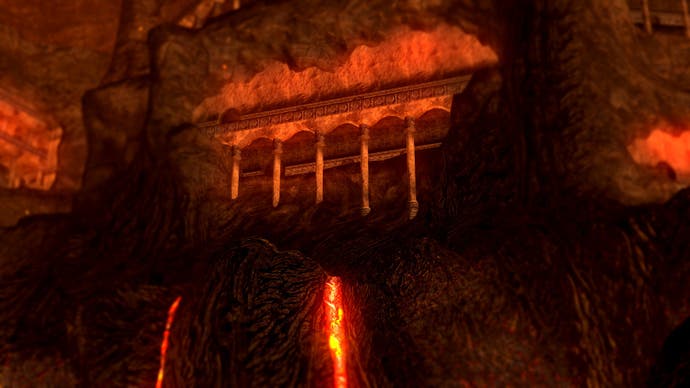
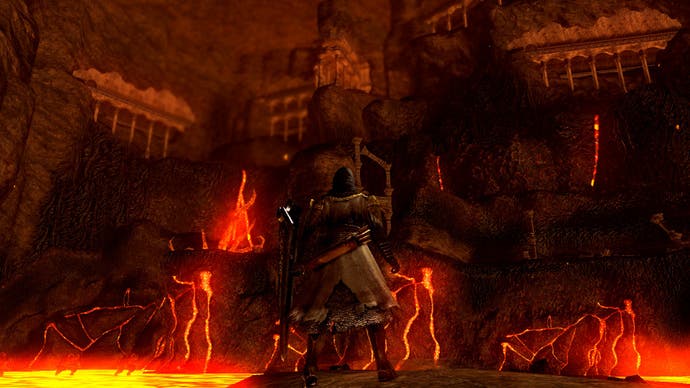
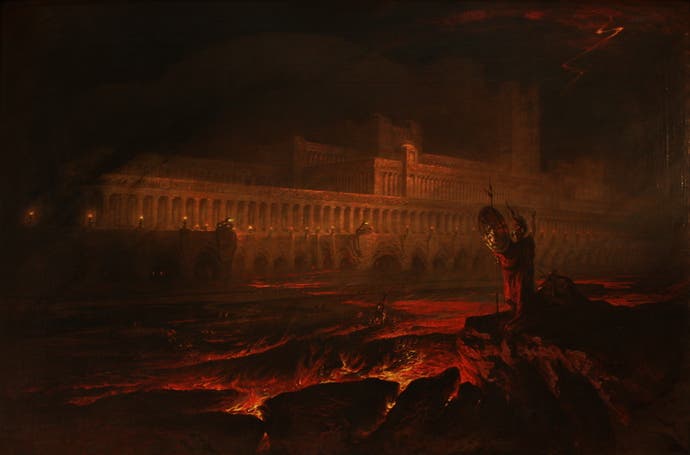
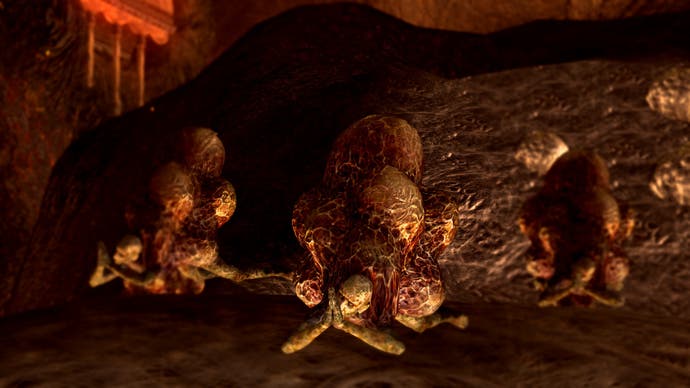
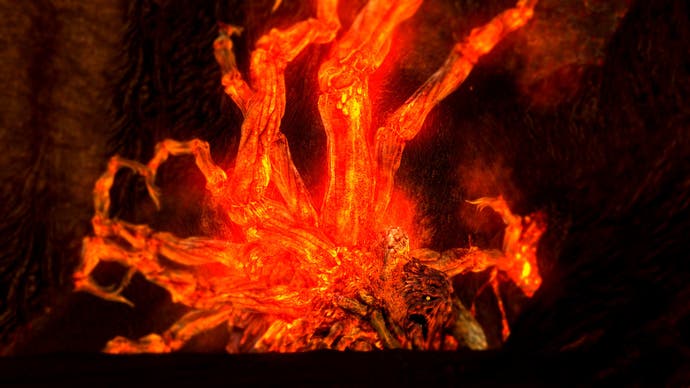
This stark contrast between highest and low places which we experience seamlessly through hours and hours of vertical travel makes hell appear like a true abyss revealing yet deeper pits, causing a sense of vertigo. The underworld, too, displays a vertical hierarchy as we descend further and further until we reach the Bed of Chaos in Lost Izalith, not unlike the nine levels of hell described in Dante Alighieri's Inferno (1320) and Sandro Botticelli's map-like illustration The Abyss of Hell (1480). But these lower levels are also where Dark Souls puts its own spin on its hell, presenting progressively unfamiliar architecture and outlandish creatures.
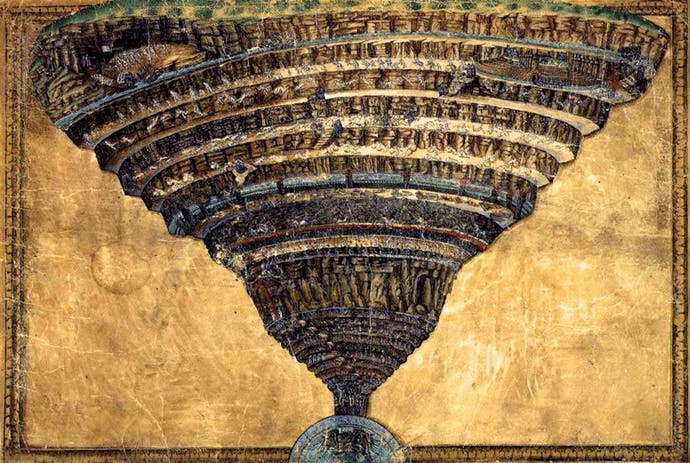
Doom's hell is less classical than Dark Souls', appearing less like an underworld and more like a separate dimension of evil. Looking up, we see an oppressive, orange sky instead of a cavern's black roof. Its whimsical demons look like they've sprung from the pages of a comic book. Still, even if its aesthetics are different, the overall iconography is still familiar. There are skeletons and horned demons, plenty of fire and blood, jagged rocks and great fortress or city-like structures.


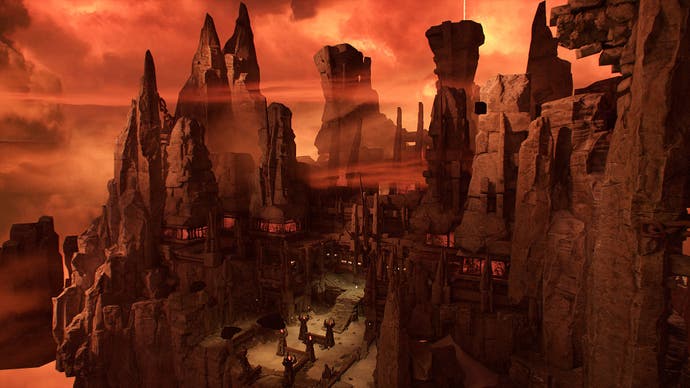
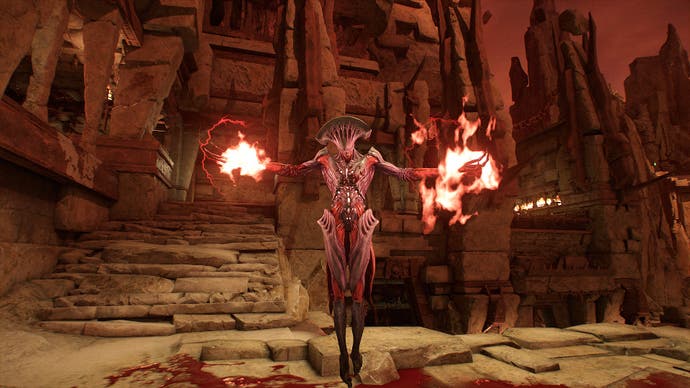
In several instances, we pass through the open jaws of giant skulls, harking back to medieval depictions of the mouth of hell. Doom also draws on other historical traditions for its aesthetic, decorating the walls of hell with demonic sigils directly inspired by medieval and early modern grimoires that list the various "characters of spirits" for use in ritual magic. And in its demonic reliefs we can see hints of Rodin's The Gates of Hell sculpture (1917).




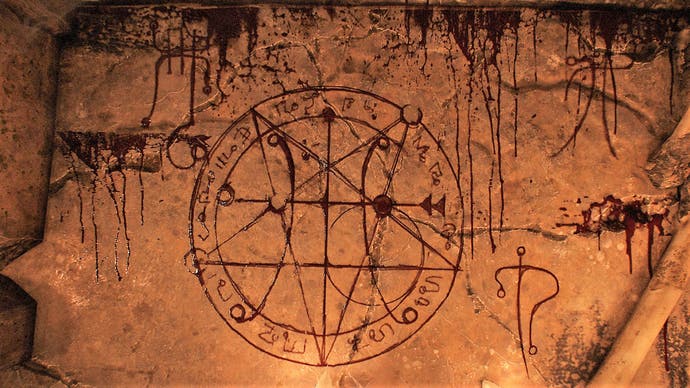
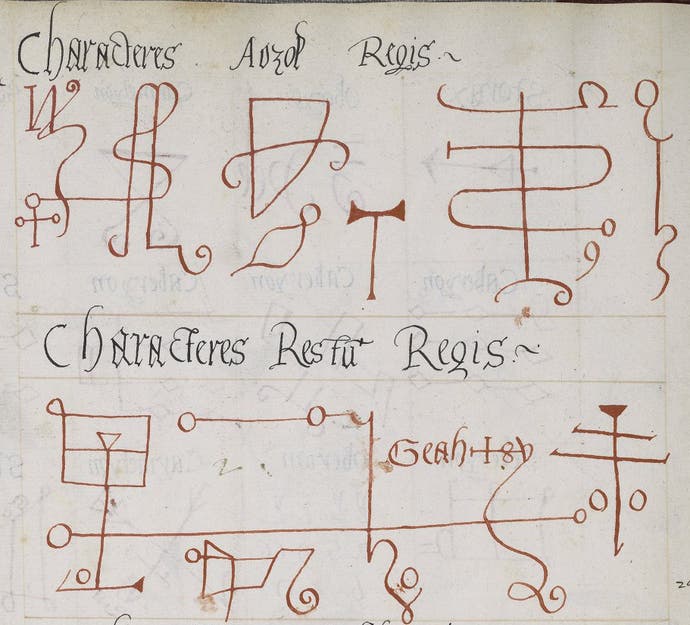
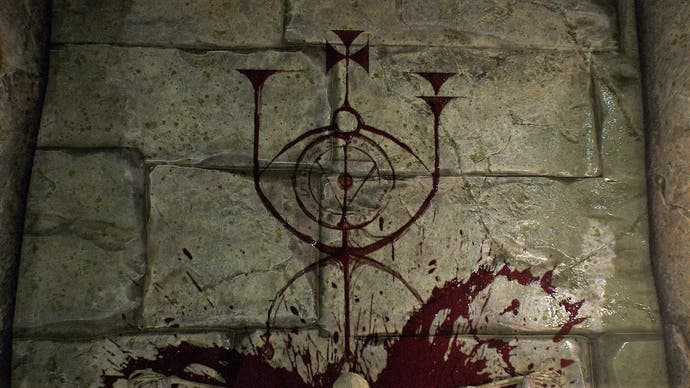
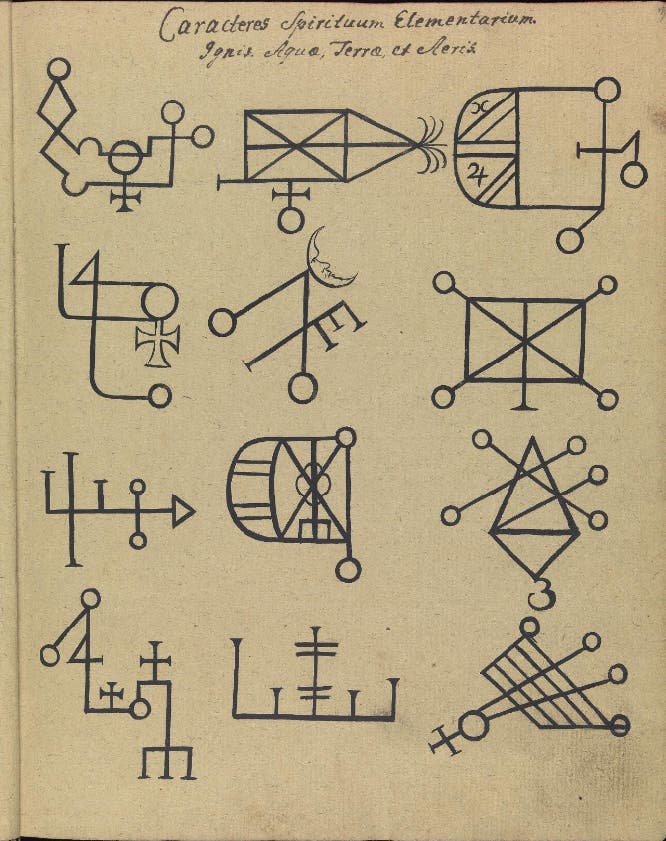

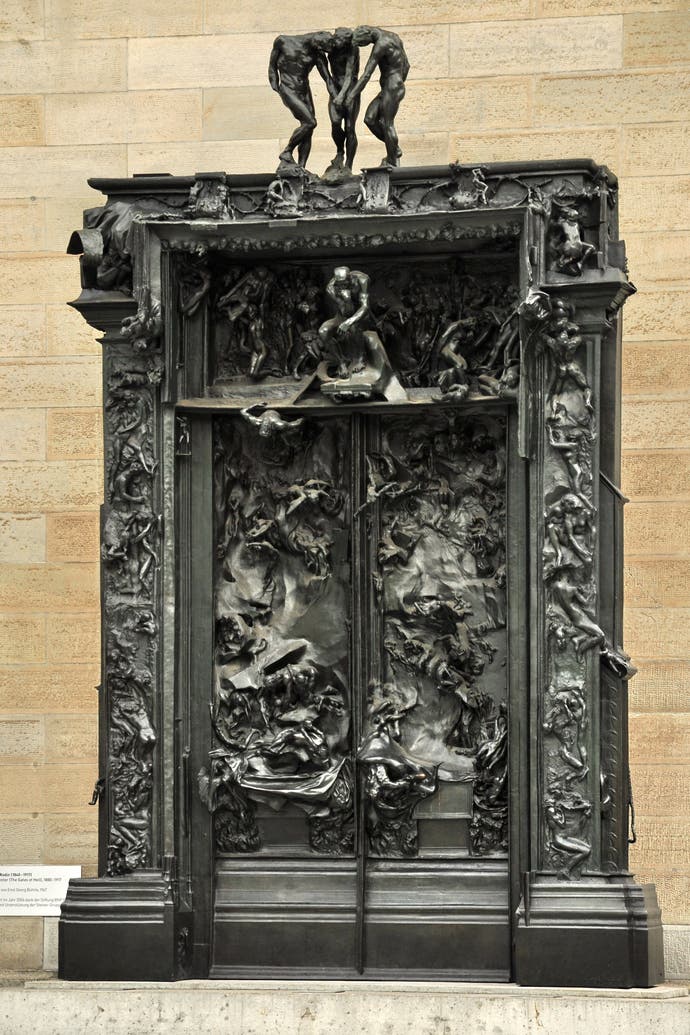
Perhaps Doom's biggest deviation from classical versions of hell is its pure corporeality. Hell is a very concrete place, without even a shred of the metaphysical, spiritual or even psychological. Even more startling perhaps, it is a hell without suffering. As such, it's the exact opposite of Hellblade's abyss, a place that's metaphorical rather than actual, and defined by both physical and psychological torment, especially Senua's personal struggle with the "curse" of psychosis. Its hell deviates aesthetically as well as iconographically from traditional depictions, its surreal geography made up not of rocks and lakes of fire, but of walls of grasping human arms and mountains of writing giants whose bodies have been fused together. Hellblade also illustrates how hell is often not as easily contained or defined as one might like; Senua's trip into Norse hell is a short one, but it becomes clear that Senua carries her torment along with her wherever she goes. Or to quote Milton's Satan: "Which way I fly is Hell; myself am Hell."

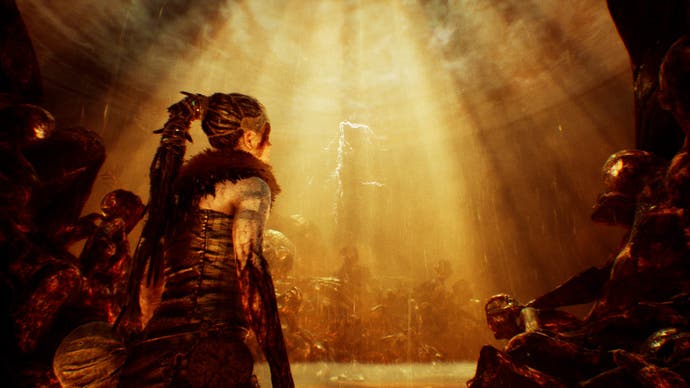

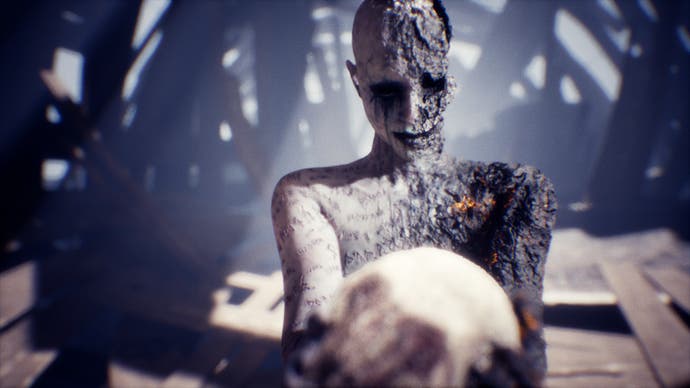
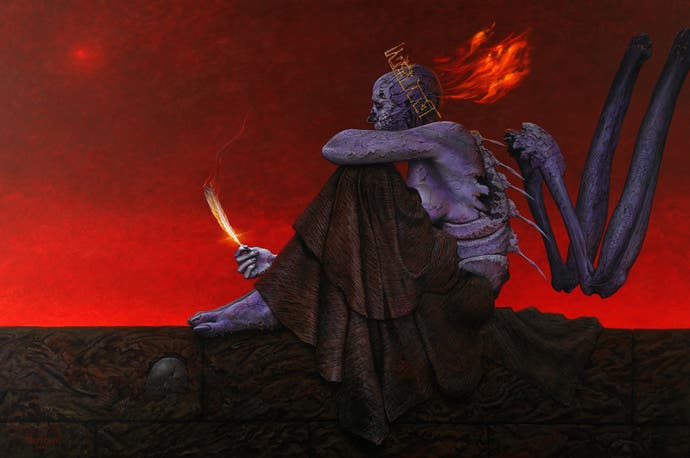
The idea of hell as a state of mind is not as recent as one might suspect. Milton's Satan claims: "The mind is its own place, and in itself / Can make a Heav'n of Hell, a Hell of Heav'n." Horror games in the tradition of Silent Hill especially have embraced this psychologised idea of hell or purgatory created by personal demons, self-flagellation and lingering guilt. In the brilliant Taiwanese horror game Detention, the student Ray awakes in a bizarre and threatening otherworld, haunted by the terrible consequences of her actions. By way of extension, Ray's personal purgatory can easily be taken as a metaphor for the political trauma of Taiwan's so-called White Terror, which functions as Detention's historical backdrop. In one poignant image, Ray walks along a river of blood that carries along the victims of persecution, a staring eye perhaps symbolising the trauma of witnessing these events, or the transparency of Ray's sins.

Most modern imaginings of hell, especially in pop culture, are devoid of any blatant moralism, and few of us today live in constant terror of the literal fires of hell. And yet, new media continue to plumb ever greater depths of the abyss, mining fresh veins of horror, or rediscovering and polishing up old ones. The fiery pit is alive and well and remains as vital as ever to our "enlightened" minds as a powerful metaphor for all kinds of suffering and horrific events, places or conditions. Along with our individual and collective fears, the thousand faces of hell will continue to evolve, sometimes appearing cathartic, terrifying or melancholy, but always repulsive and seductive in equal measures.

